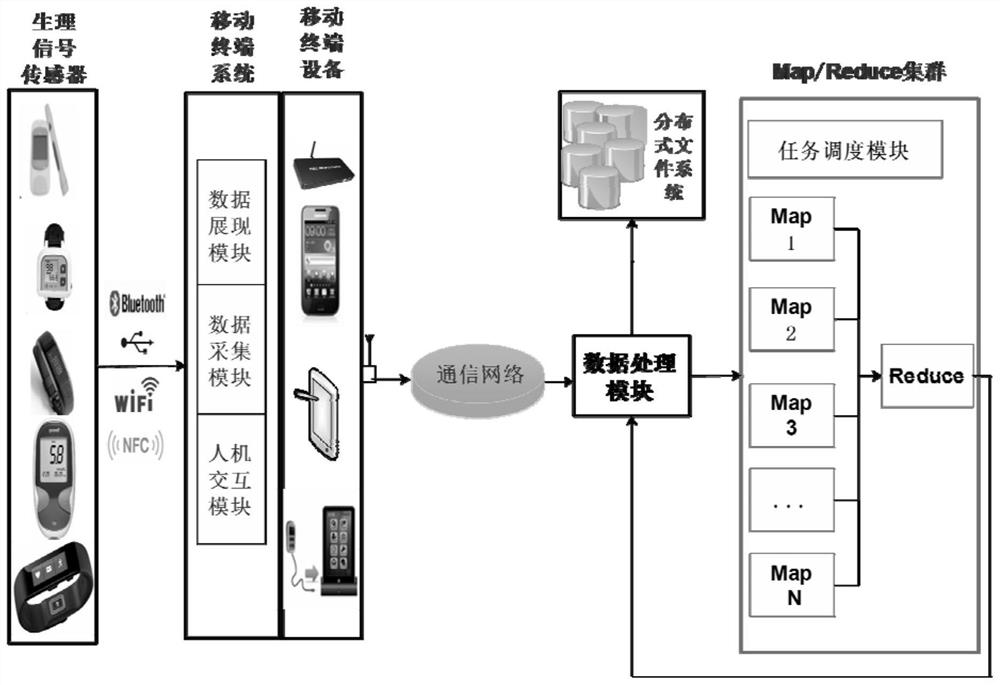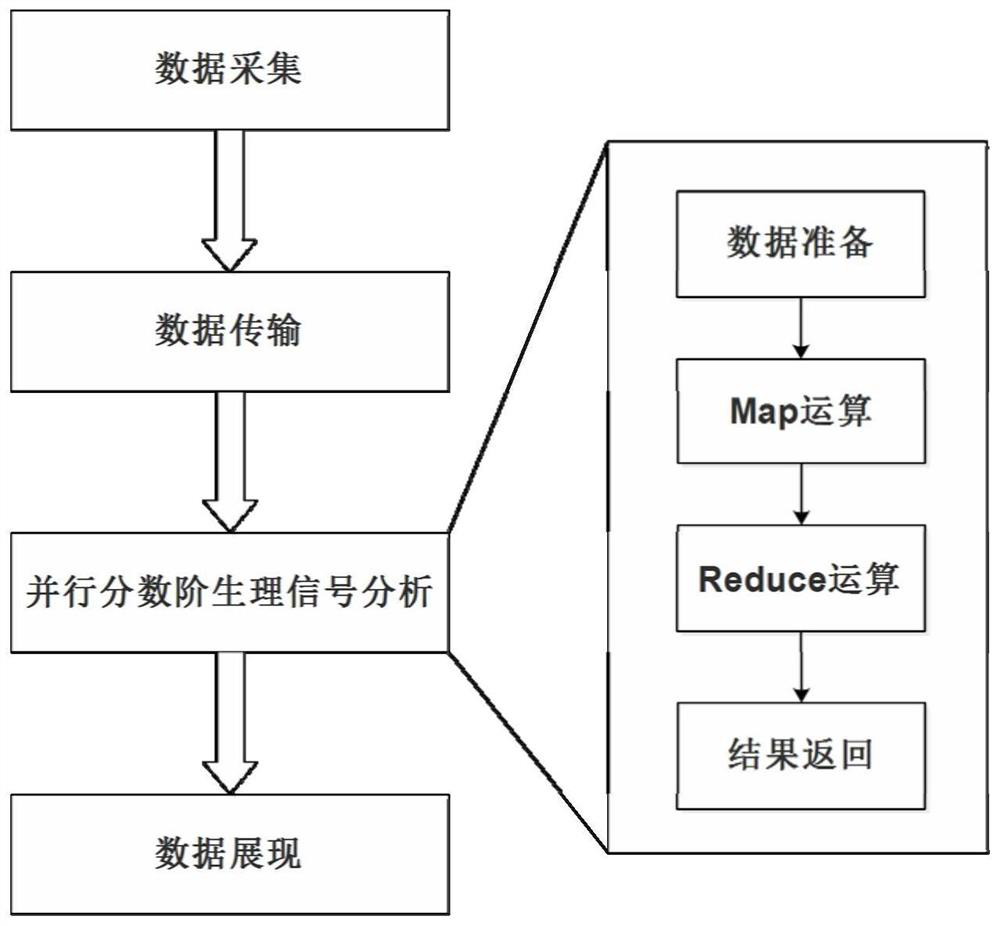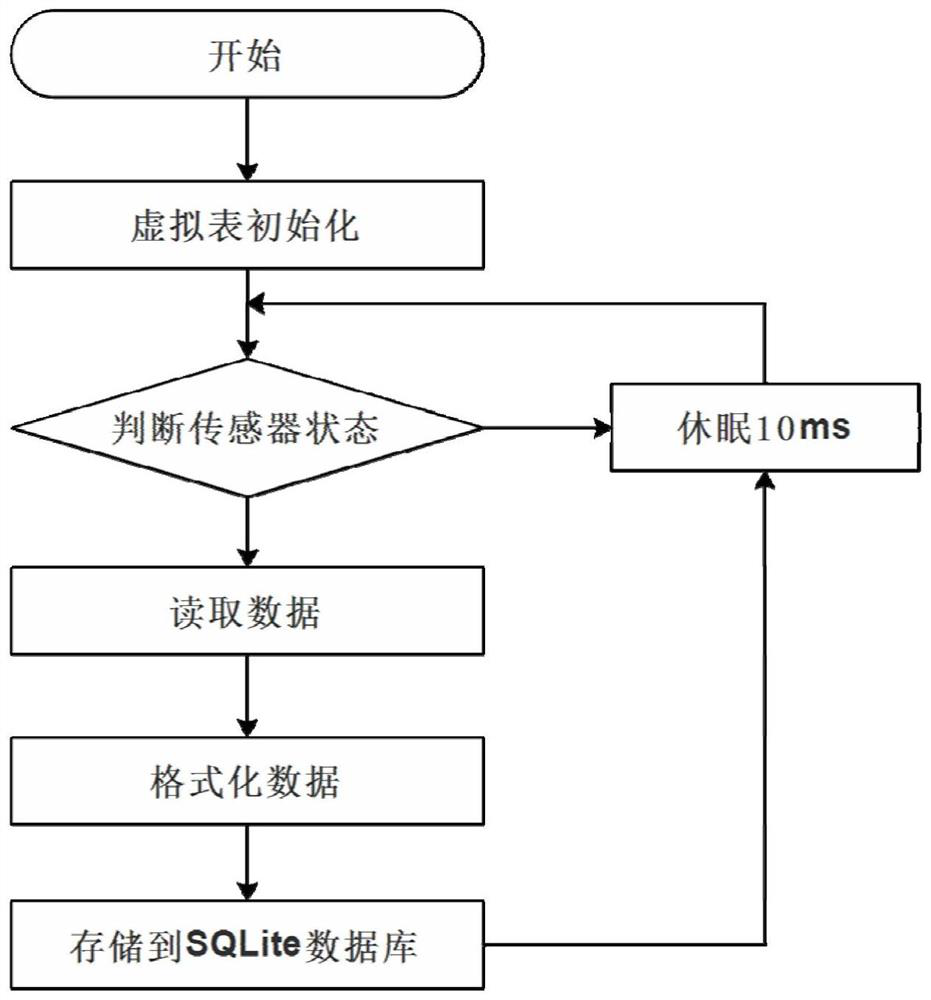A Real-Time Acquisition and Analysis Method Based on Parallel Fractional Physiological Signals
A technology of physiological signals and analysis methods, which is applied in the field of real-time acquisition and analysis of physiological signals based on parallel fractional order, can solve problems such as unsupported airborne capability and accuracy problems, and achieves easy software and hardware implementation, high precision, and real-time acquisition and analysis. Effect
- Summary
- Abstract
- Description
- Claims
- Application Information
AI Technical Summary
Problems solved by technology
Method used
Image
Examples
Embodiment 1
[0052] like figure 2 As shown, the processing steps based on the parallel fractional-order physiological signal real-time acquisition and analysis method are divided into the following four processes: data acquisition, data transmission, parallel fractional-order physiological signal analysis and data presentation.
[0053] Step 1: As image 3 shown, collecting physiological signals from sensors,
[0054] Step 1a: After the mobile terminal is started, the sensors and communication protocols supported by the mobile terminal are registered in the virtual table, and the table includes device type, communication protocol, communication parameters, communication method and format information.
[0055] Step 1b: Determine whether the sensor data is readable. If it is readable, identify the communication protocol and sensor type according to the connection information and call the virtual table registration method to obtain the physiological signal data. If it is not readable, conti...
Embodiment 2
[0083] This embodiment provides a real-time acquisition and analysis of ECG signals based on fractional order parallel distribution. ECG signal is an important physiological signal, which can be used as an important indicator to reflect people's physiological and psychological state. In this embodiment, the mobile terminal adopts a customized terminal device based on the Android platform, and uses the Apache Flink big data computing framework to build a Map / Reduce cluster. The parallel distributed fractional ECG analysis process is as follows:
[0084] Step 1: The Android smart terminal reads the ECG signal and stores the data in the local database SQLite3.
[0085] Step 2: Realize remote call through Java and Resting technology, and submit ECG data from HTTP protocol to remote server.
[0086] Step 3: The remote server is composed of elastic computing server, distributed database service Hbase and Map / Reduce cluster server. The elastic computing server receives the ECG sig...
Embodiment 3
[0091] This embodiment provides a real-time acquisition and analysis of electrical skin signals based on fractional order parallel distribution. Galvanic skin signal, also known as “galvanic skin response” and “galvanic skin property”, represents the change of skin electrical conduction when the body is stimulated, and can be used as an indirect indicator of brain arousal, alertness, and tension.
[0092] In this embodiment, a foot skin skin sensor is configured in the car, and data is collected by a vehicle-mounted tablet computer. The tablet computer is configured with a 4G network card to communicate with a remote server, and is connected to the skin skin sensor through Bluetooth.
[0093] The tablet is based on the Android platform and uses the Apache Flink big data computing framework to build a Map / Reduce cluster. The parallel distributed fractional galvanic skin analysis process is as follows:
[0094] Step 1: The tablet computer is connected to the GSK sensor via Blue...
PUM
 Login to View More
Login to View More Abstract
Description
Claims
Application Information
 Login to View More
Login to View More - R&D
- Intellectual Property
- Life Sciences
- Materials
- Tech Scout
- Unparalleled Data Quality
- Higher Quality Content
- 60% Fewer Hallucinations
Browse by: Latest US Patents, China's latest patents, Technical Efficacy Thesaurus, Application Domain, Technology Topic, Popular Technical Reports.
© 2025 PatSnap. All rights reserved.Legal|Privacy policy|Modern Slavery Act Transparency Statement|Sitemap|About US| Contact US: help@patsnap.com



